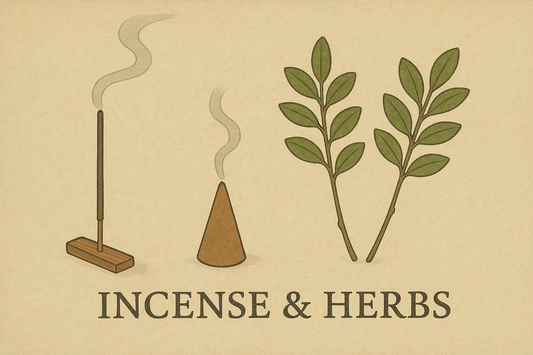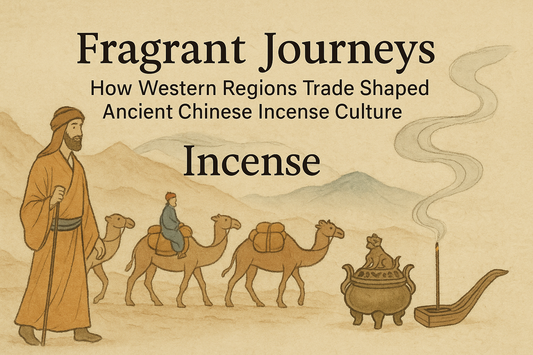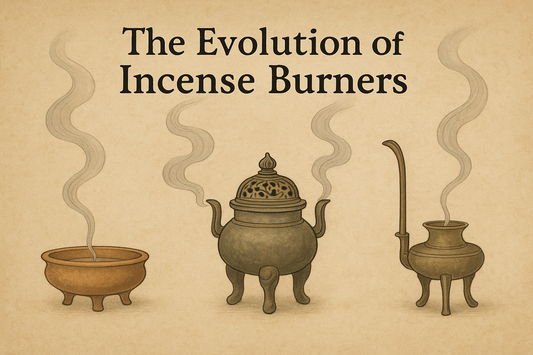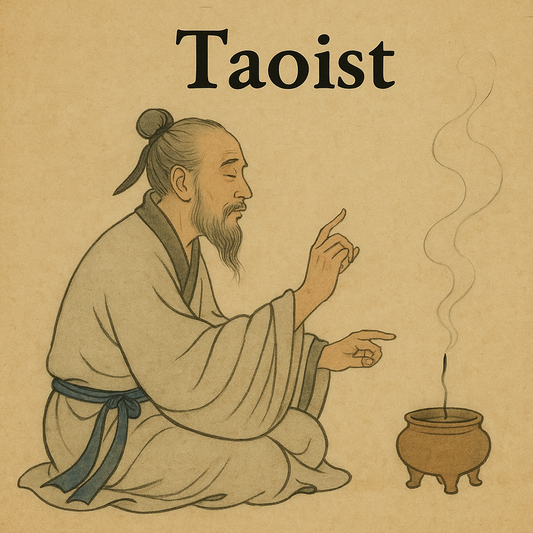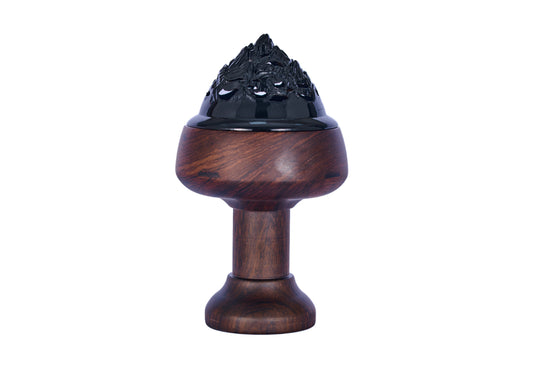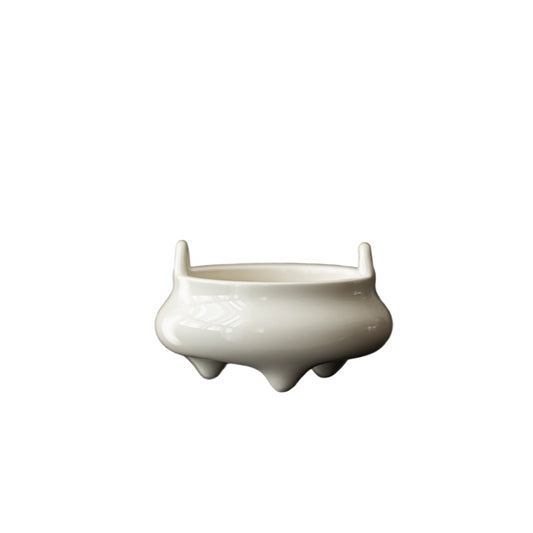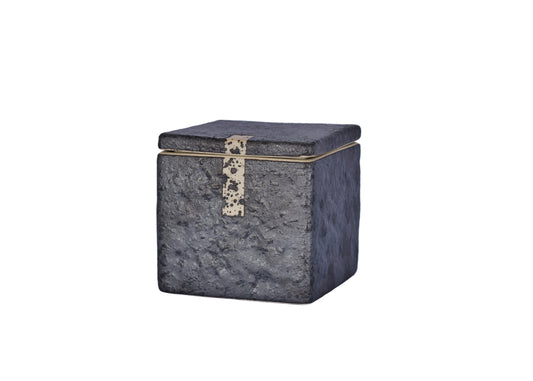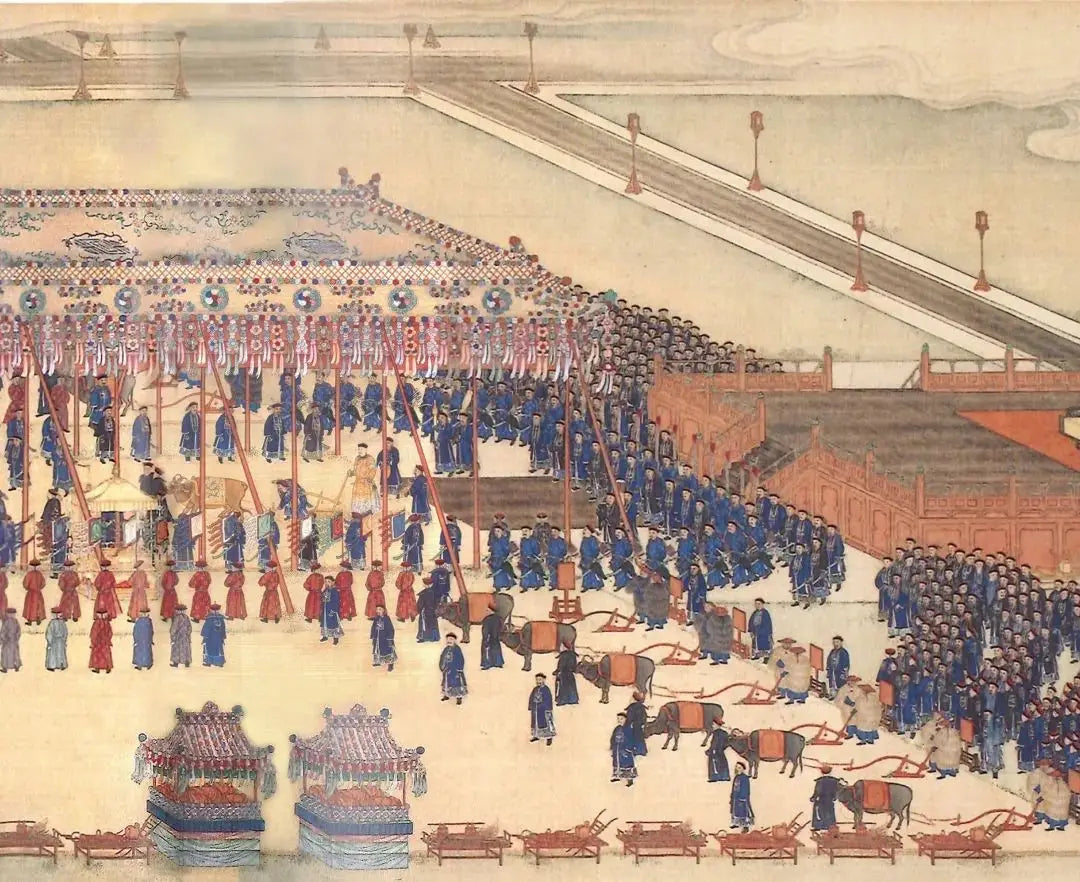
Do You Know How Chinese People Use Incense in Rituals?
The Ritual Practices of Incense in Chinese Taoism and Buddhism
The Historical Origins and Ritual Practices of Incense in Chinese Taoism and BuddhismChinese Incense, Incense holders, Incense burner
Incense culture in China boasts a profound and extensive history, with its use in sacrificial rituals dating back to Neolithic times. Beyond its material form, incense serves as a spiritual conduit, facilitating communication between the earthly and heavenly realms, expressing reverence, and purifying the mind and body. Over centuries, as Taoism and Buddhism developed and integrated into Chinese society, incense adopted distinct roles within each tradition, leading to unique ritual practices and symbolic meanings. This article aims to rigorously explore the historical origins, core philosophies, and specific ritual procedures of incense in Chinese Taoism and Buddhism from a purely scientific perspective.

Early Applications and Cultural Evolution of IncenseChinese Incense, Incense holders, Incense burner
The early application of incense in China can be traced to the ancient 'fanji' (燔祭) rituals. During this period, people burned firewood or specific plants, believing the rising smoke would reach the deities, conveying prayers or gratitude. This primitive form of sacrifice laid the foundation for the later development of incense culture. With the introduction of new aromatics and advancements in incense-making techniques, the forms and uses of incense diversified, evolving from a simple smoke medium into a sacrificial item with specific fragrances and symbolic meanings.
Incense in Taoist Rituals: A Bridge to the Divine and a Tool for CultivationChinese Incense, Incense holders, Incense burner
Taoism, as an indigenous Chinese religion, has a history and development of sacrificial incense deeply intertwined with traditional Chinese culture. Taoists believe that incense smoke acts as a bridge connecting the human realm with the immortal realm, serving as a crucial means for devotees to convey their heartfelt wishes and seek divine blessings.
Historical Development and Core SignificanceChinese Incense, Incense holders, Incense burner
The origins of incense use in Taoism can be traced back to the pre-Qin period's 'fanji' tradition. During the reign of Emperor Wu of Han, as Taoist thought and magical arts flourished, incense burning began to be employed for invoking and appeasing spirits, marking the establishment of incense's role in Taoist rituals. In the Wei, Jin, Southern, and Northern Dynasties, with the refinement of Taoist doctrines and the development of 'zhaijiao' (齋醮) ceremonies, incense burning became an indispensable part of Taoist cultivation practices and ritual activities. Taoist scriptures increasingly documented the use of incense, emphasizing its functions in communicating with deities, purifying spaces, and warding off evil. By the Song, Yuan, Ming, and Qing dynasties, incense was even more widely applied in Taoism, becoming a central offering in various 'zhaijiao' ceremonies.
The core significance of incense in Taoist rituals manifests on multiple levels: Firstly, incense smoke is regarded as a medium for communication between humans and deities, allowing the prayers of mortals to ascend to the heavens. Secondly, the fragrance possesses the ability to purify the mind and body, cleansing impurities and creating a serene environment conducive to spiritual cultivation. Furthermore, burning incense is a profound expression of piety and respect towards deities and ancestors, embodying the Taoist philosophy of ‘Tao follows nature, and heaven and humanity are one’ (道法自然,天人合一). Additionally, Taoists typically burn three sticks of incense, symbolizing reverence for the ‘Three Treasures’ (三寶): the Tao (道), the Scriptures (經), and the Master (師), signifying the Taoist practitioner’s respect and devotion to the Great Tao, its teachings, and their spiritual guides.
Taoist Incense Rituals and RegulationsChinese Incense, Incense holders, Incense burner
Taoist incense rituals adhere to strict protocols and regulations to ensure the solemnity and efficacy of the ceremony. The common procedures are as follows:
- Selecting Incense: Typically, three incense sticks are chosen, which must be intact and unbroken.
- Lighting: Hold the unlit ends of the incense sticks with the left hand, pointing the tips downwards, and light them. If a flame appears, gently wave the sticks from side to side or fan the flame out with your hand; it is strictly forbidden to blow out the flame with your mouth, as this shows disrespect to the deities.
- Holding Incense: After lighting, hold the incense sticks with both hands, raising them to forehead level, and bow respectfully. In Taoist tradition, the left hand is considered the pure hand, so the incense should be held primarily with the left hand, with the right hand covering it as a sign of reverence.
- Placing Incense: The three incense sticks should be inserted into the censer in a specific order. The common sequence is to first insert the central stick, representing the ‘Tao’; then the second stick on the left (to the deity’s right), representing the ‘Scriptures’; and finally, the third stick on the right (to the deity’s left), representing the ‘Master.’ The spacing between the three sticks should be approximately one inch, symbolizing ‘cun cheng gan shen’ (寸誠感神), meaning that even a small act of sincerity can move the divine. When inserting the incense, ensure the sticks are upright and not leaning, and avoid inserting them completely into the ash.
- Incantations: During Taoist ‘zhaijiao’ ceremonies, priests often silently recite the ‘Zhuxiang Zhou’ (祝香咒 – Incense Invocation Mantra), such as: “The Tao is learned from the heart, the heart is conveyed through incense. Incense burns in the jade censer, the heart is present before the Emperor. True spirits descend, immortals arrive. May this humble servant’s plea reach the Nine Heavens.” This mantra aims to convey the priest’s prayers to the celestial deities via the incense smoke.
Incense in Buddhist Rituals: Purifying the Mind and Offering to the Triple GemChinese Incense, Incense holders, Incense burner
When Buddhism was introduced to China during the Eastern Han Dynasty, its incense practices integrated with local Chinese culture, forming a unique Buddhist incense culture. Buddhism views incense not only as a supreme offering to Buddhas and Bodhisattvas but also as an aid for practitioners to purify their minds and cultivate wisdom.
Historical Development and Core SignificanceChinese Incense, Incense holders, Incense burner
The use of incense in Buddhism originated in ancient India. In the hot climate of ancient India, incense was used to eliminate impurities, repel insects, and also to refresh the mind and aid meditation. As Buddhism spread eastward, the practice of burning incense was introduced to China. By the Han Dynasty, incense burning had become an important part of Buddhist rituals and gradually integrated into daily Chinese life. After the Tang Dynasty, as Buddhism reached its peak in China, incense gained even greater importance, becoming an essential item for offering to Buddhas, listening to the Dharma, and practicing cultivation.
The core significance of incense in Buddhist rituals lies in expressing piety and reverence. The fragrance is believed to purify the meditation space, creating a pure and solemn atmosphere for Buddhas and Bodhisattvas, while also helping practitioners to focus their minds and concentrate on the Dharma. Buddhist scriptures often refer to “Jie Ding Zhen Xiang” (戒定真香 – true incense of precepts and samadhi) and “Wufen Fashen Xiang” (五分法身香 – five-part dharma body incense), linking incense to the cultivation of precepts, meditative concentration, and wisdom. This reminds practitioners to contemplate the Dharma through the scent of incense and cultivate wholesome roots. The number of incense sticks also carries symbolic meaning in Buddhism; typically, three sticks are used to represent sincere offerings to the ‘Triple Gem’ (三寶): the Buddha, the Dharma (teachings), and the Sangha (community), or to symbolize the cultivation of the ‘Threefold Training’ (三無漏學): precepts, meditative concentration, and wisdom.
Buddhist Incense Rituals and RegulationsChinese Incense, Incense holders, Incense burner
Buddhist incense rituals are relatively simpler but equally emphasize sincerity and reverence:
- Lighting: After lighting the incense, if a flame appears, gently fan it out with your hand; never blow it out with your mouth.
- Holding Incense: Hold the incense with both hands, raising them to forehead level, with the left hand above the right, palms together in a gesture of reverence. Face the Buddha image and silently recite prayers or Buddha’s name.
- Placing Incense: Insert the incense sticks into the censer. Three sticks are generally preferred, symbolizing offerings to the Buddha, Dharma, and Sangha. Ensure the sticks are upright.
- Censer: In Buddhism, the censer is often referred to as a ‘baoding’ (寶鼎 – precious tripod) and is used for offerings to Buddhas and Bodhisattvas. Besides upright censers, horizontal censers are also commonly used by lay practitioners in home altars, especially for stick or coil incense.
- Sincerity is Key: Buddhism emphasizes that the act of burning incense is not about the quantity but the sincerity of the heart. Therefore, practices like seeking the ‘first incense’ (頭炷香) are not encouraged; instead, inner purity and reverence are prioritized.
Similarities, Differences, and Cultural Integration of Incense in Taoism and BuddhismChinese Incense, Incense holders, Incense burner
While Taoism and Buddhism have distinct historical origins, specific rituals, and symbolic meanings for incense, their long-term development in Chinese culture has also shown mutual influence and integration. For instance, both traditions commonly use three incense sticks, and although their specific symbolic interpretations differ, both emphasize the significance of the number ‘three.’ Furthermore, both regard incense as a medium for communicating with the sacred and purifying the mind and body, and both stress the importance of sincerity.
This integration is evident not only in ritual practices but also in the evolution and widespread use of incense tools. Censers are indispensable ritual objects in both Taoist temples and Buddhist monasteries. Ceramic censers, due to their stability, ease of cleaning, and diverse forms, have found extensive use in both religious settings. For example, white ceramic censers, with their elegant simplicity, can embody the Taoist principle of ‘qingjing wuwei’ (清靜無為 – purity and non-action) while also reflecting the solemnity and dignity of Buddhism.

ConclusionChinese Incense, Incense holders, Incense burner
The history of sacrificial incense in China is a microcosm of the broader development of Chinese religious culture. From the perspectives of Taoism and Buddhism, incense is not merely a ritualistic item but a cultural symbol that carries faith, conveys emotions, and purifies the soul. Its rigorous rituals and profound connotations collectively form a unique landscape of Chinese incense culture. Understanding these historical origins and practices allows for a deeper appreciation of the vast and profound nature of traditional Chinese culture.
Frequently Asked Questions (FAQ)Chinese Incense, Incense holders, Incense burner
Q1: Why are three incense sticks typically burned in Chinese sacrificial rituals?
A1: In Taoism, three incense sticks represent reverence for the ‘Three Treasures’: the Tao, the Scriptures, and the Master. In Buddhism, three incense sticks symbolize offerings to the ‘Triple Gem’: the Buddha, the Dharma, and the Sangha, or the cultivation of the ‘Threefold Training’: precepts, meditative concentration, and wisdom. This reflects the shared importance of the number ‘three’ in both religions and their respective doctrinal meanings.
Q2: If the tip of an incense stick has a flame, why should it not be blown out with the mouth?
A2: In both Taoist and Buddhist traditions, blowing out the flame with one’s mouth is considered disrespectful to the deities because breath is seen as impure. The correct method is to gently fan the flame out with your hand or wave the stick until the flame extinguishes naturally.
Q3: Are there any specific considerations for censers used in sacrificial rituals?
A3: Censers are crucial ritual vessels for burning incense. Both Taoism and Buddhism have their own forms and usage guidelines for censers. For instance, in Buddhism, a censer is often called a ‘baoding’ (precious tripod). Ceramic censers are widely used in both religions due to their material properties, and their shapes and sizes vary depending on the deity being honored and the specific setting.
Q4: Is the meaning of burning incense limited to religious sacrifices?
A4: While burning incense in China is primarily associated with religious sacrifices, its meaning extends beyond that. The fragrance itself has purifying and calming effects, and in daily life, incense is often used for aromatherapy and appreciation to cultivate self-discipline and create a serene atmosphere. However, in this article, we primarily focus on its rigorous application in Taoist and Buddhist sacrificial practices.
Q5: What are the main differences in incense burning rituals between Taoism and Buddhism?
A5: The main differences lie in the specific order of inserting the incense sticks and the incantations recited. Taoism has a specific ‘center, left, right’ order for inserting incense and uses the ‘Zhuxiang Zhou’ (Incense Invocation Mantra). Buddhism, on the other hand, places more emphasis on sincerity of heart, with fewer strict rules regarding the order of insertion, and focuses more on purifying the mind and offering to the Triple Gem through the fragrance.
Discover More in Monian
Explore our handcrafted incense holders and natural incense collections designed to bring peace and elegance to your space.
Discover Now
